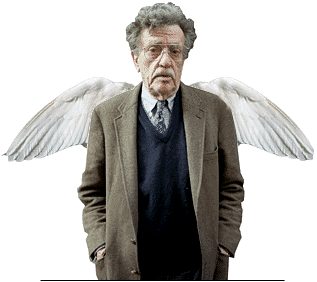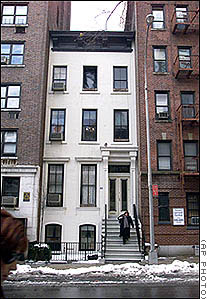BY MICHAEL WEINREB
I cannot say what it was, exactly, that possessed me to do this — I had never stalked a celebrity before then, and have not since. It was an act of free will, but at the same time, seemed predestined.
This was several years ago, not long after I first moved to New York. I had reached a nadir, tumbled into one of those angst-ridden quarter-life crises which are unavoidable for a man in his 20s. Of course, there were colossally stupid decisions made: I fell in love with a woman who lived with another man; worked a miserable job at a miserable trade magazine geared toward salesmen and middle managers, the miserable souls Vonnegut wrote about so gracefully in books like Breakfast of Champions. I was coming to terms with the fact that ours is not a righteous existence.
Vonnegut’s writing beckons to me when I am at my most miserable. This is his genius, and his legacy: No author will ever be more adept at extracting comedy out of the inevitable suffering of the human race. Because of this, no matter how awful you felt, no matter how bleak your life may have seemed, Vonnegut made you feel connected. You could be living in a bunker in Kazakhstan, but in reading him you were no longer alone in your misery.It was fitting, then, that I had discovered Vonnegut when I was 23 years old and living in Akron, Ohio. He was a Midwesterner, after all, born in Indianapolis, and Akron is a Midwestern town that has seen its share of hardships. Vonnegut survived the firebombing at Dresden. Akron survived the death of the Rust Belt, not to mention Jeffrey Dahmer. It was in Akron that I began reading the copy of Cat’s Cradle that I was supposed to have finished during my freshman year of college. I never did, of course — I never read anything in college except the sports pages. Which was ironic on some level, I suppose, because up until then, I knew Vonnegut only as the bushy-haired man who made a (seemingly) inexplicable cameo in the Rodney Dangerfield movie Back to School. You know the scene, everybody does: Dangerfield’s character, the tacky millionaire Thornton Mellon, calls in the author to help him write a term paper about himself.
Me, I used the Cliff’s Notes instead.
After I read Cat’s Cradle, I read Slaughterhouse-Five. After I read Slaughterhouse-Five, I read Breakfast of Champions. I had spent my whole life cowering in fear of literature. I grew up reading MAD Magazine and the backs of cereal boxes. I read the first 20 pages of Jane Eyre and thought my head might explode. But Vonnegut didn’t write like that. And like me, he had an older brother who studied chemistry at M.I.T. Like me, he charted his own path by being willfully stupid, and by not paying  attention in school. Like me, he largely studied drinking in college. Like me, he had worked a menial job, as a public-relations man for General Electric in Schenectady, New York.
attention in school. Like me, he largely studied drinking in college. Like me, he had worked a menial job, as a public-relations man for General Electric in Schenectady, New York.
The only unassailable advice about writing that I’ve ever heard in the years since I read Cat’s Cradle, since I began attempting (often unsuccessfully) to write fiction, came from Vonnegut, in an interview with the Paris Review.
The advice was this: Make a character want something.
So when I saw Kurt Vonnegut walking in the opposite direction on Second Avenue, walking alone, walking past a Chinese restaurant with a five-dollar lunch special — I knew this because the five-dollar lunch special was my chief means of subsistence in those days — I raised my eyebrows at him, in the way you raise your eyebrows when you see somebody you recognize and admire, someone you have spent many lonely nights with, but someone who never actually seemed to exist, in a real and obvious way. I am not much for religion, and neither was Vonnegut, but I imagine religious people get a similar feeling when they “see” Jesus or Mohammad or the Virgin of Guadalupe or whoever. You say to yourself, “Is that who I think it is?” And then you think, “There is no way that could be who I think it is. Because if it was him, he would be flanked by students and photographers and civil servants and men in suits who edit glossy magazines.” [GO TO CITIZEN MOM FOR THE EXCITING CONCLUSION]
